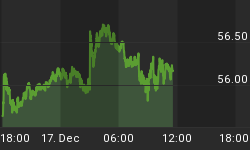Market's Pricing Mechanism
As we outlined using an example with Facebook on October 25, the value of the ETFs in your portfolio are determined by the aggregate opinion of millions of investors around the globe. If the aggregate opinion sets asset prices, then keeping an eye on aggregate opinions falls into the prudent category.
First Team ETFs
One method to track aggregate demand is to examine relative strength. ETFs that are in greater demand than the S&P 500 ETF (SPY) go up at a faster rate than SPY (they make more money). The table below contains ETFs that investors have favored over SPY in recent weeks. We can think of the list below as ETF First-Team All-Americans.

Leaders Speak To Conviction
When investors are confident about future economic outcomes they prefer to invest in stocks rather than bonds. Therefore, the fact that Treasuries (TLT) or the aggregate bond ETF (AGG) are absent from the table above tells us the market's pricing mechanism remains net bullish regarding future outcomes related to the economy, Fed, earnings, and geopolitics.
Second Team Also Aligns With Stock Bulls
Second-Team All-Americans are exceptional athletes. Our tier-two list of ETFs may not be the best performers, but they are still attracting a lot of attention from investors. The table below contains numerous economically-sensitive ETFs that point to investor confidence about future economic outcomes.

Investment Implications
We have seen some subtle shifts in ETF leadership in recent weeks. The emergence of large caps and consumer staples speak to some economic doubt creeping into the supply and demand landscape. As we noted on November 13, Janet Yellen's confirmation hearing could provide a catalyst for weak-dollar friendly ETFs (foreign, emerging markets, energy, etc) to move up in the pecking order. Until the composition of the tables above shift to a more defensive bias, we will continue to hold our positions in U.S. stocks (VTI), technology (QQQ), energy (XLE), financials (XLF), small caps (IWM), foreign stocks (VEU), and emerging markets (EEM). As we noted on November 12, we would like to see some improvement in emerging markets. Should EEM remain weak, we may reduce our exposure for a second time before the markets close Friday.















